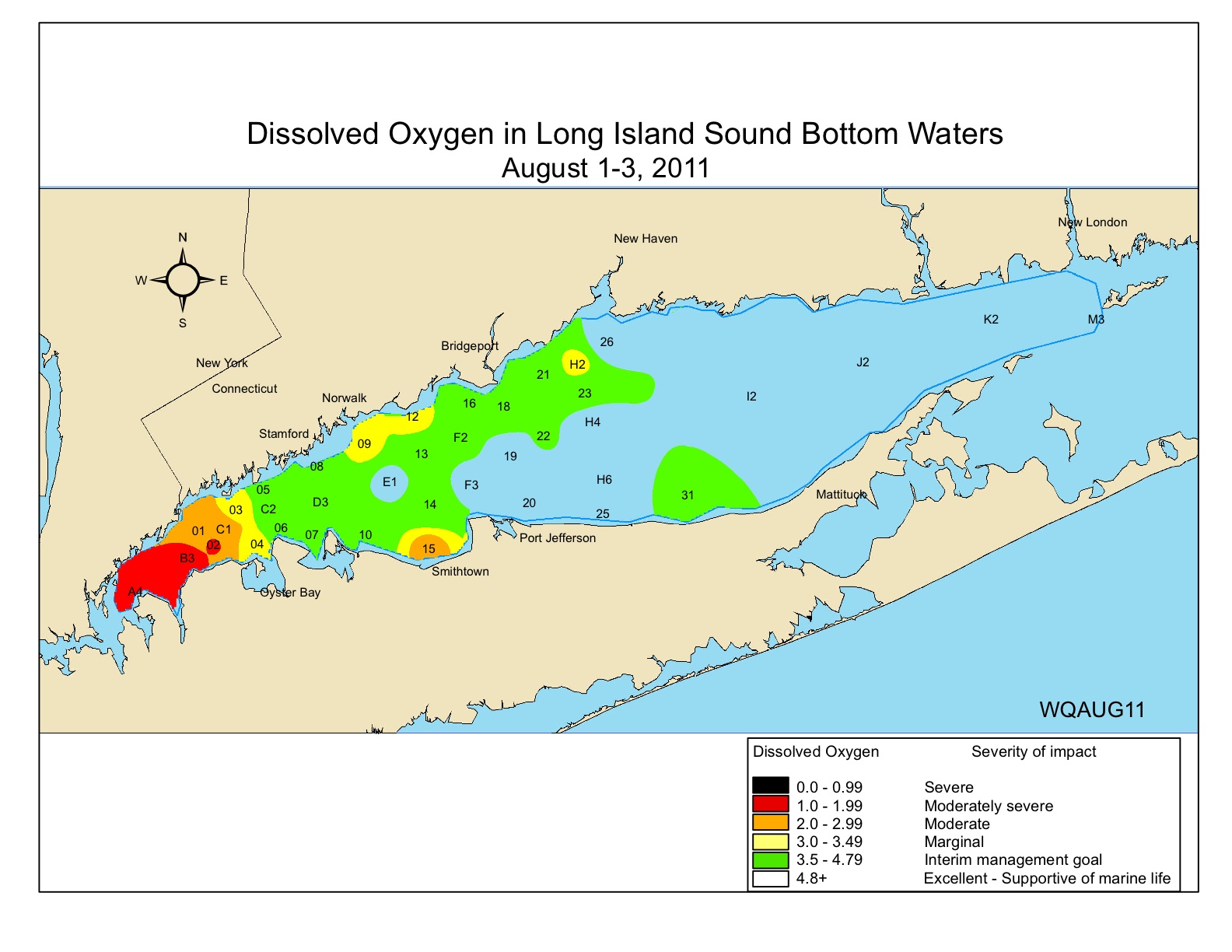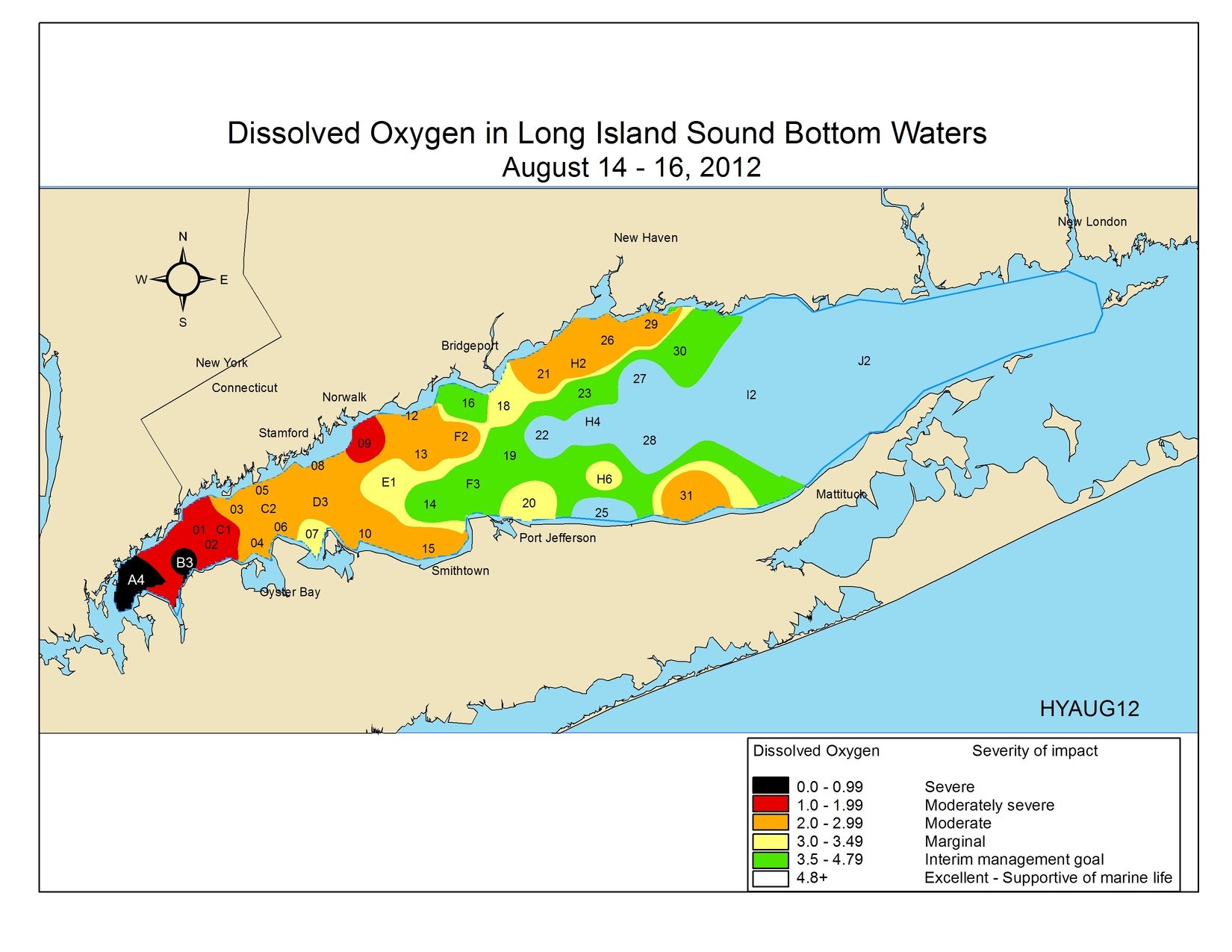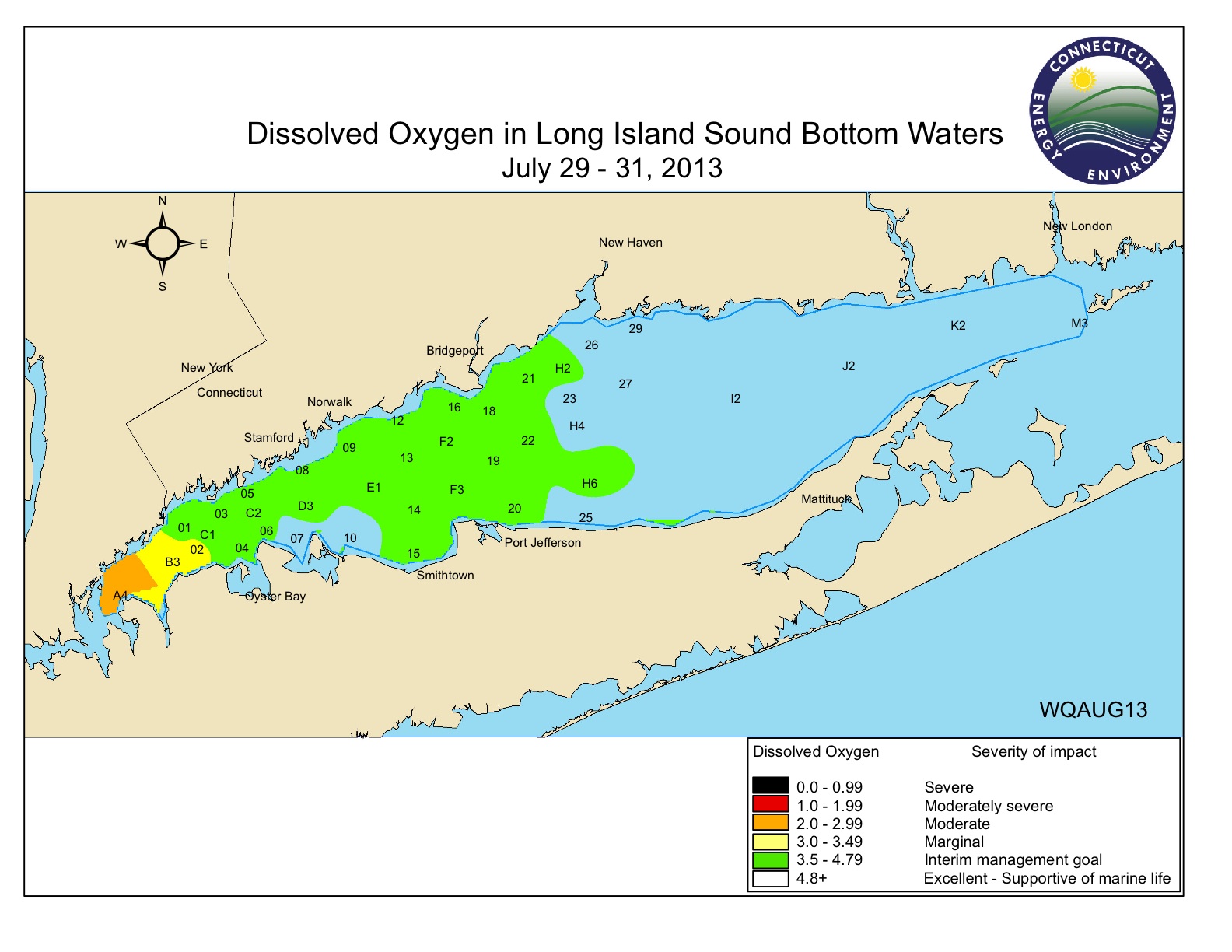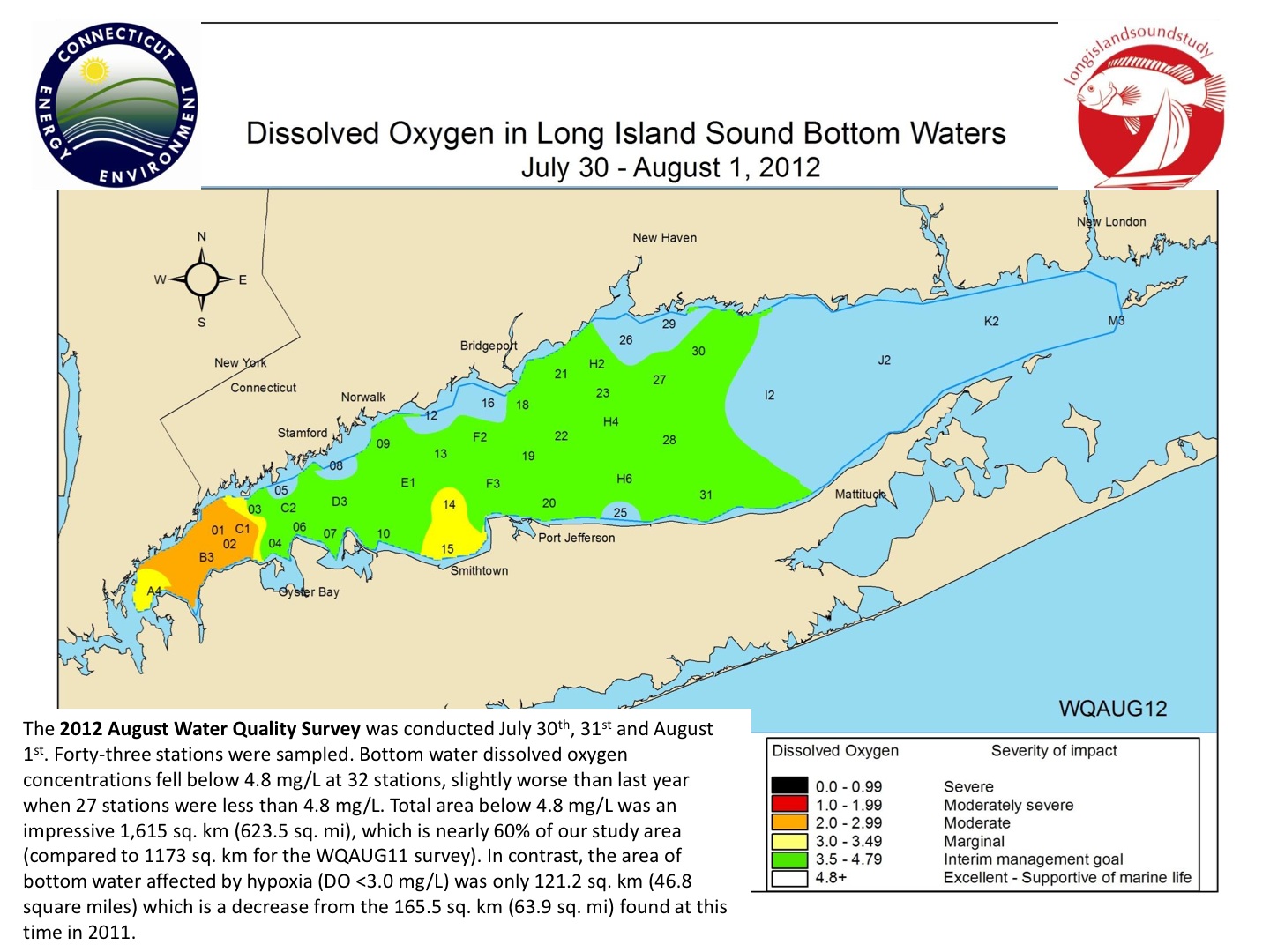Water quality as measured by dissolved oxygen is approaching its typical summertime low in the far western end of Long Island Sound.
Recent tests indicate that the problem might end up being less widespread geographically than a year ago. The data come from the Connecticut Department of Energy and Environmental Protection, which conducted its early August water quality sampling cruises last week. Follow-up testing is scheduled for next week and much more will be known when those results are released about a week later.
Readings between 2.99 and 2 milligrams of oxygen per liter of water are considered “moderate hypoxia”—the level at which fish start to have real trouble.
You can see this reflected in fish catches. DEEP researchers have calculated the extent to which the Sound’s habitat is impaired as oxygen concentrations drop, based on the corresponding drop in fish biomass (that is, the total weight of all the fish caught):
Below 4 mg/l – 4 percent reduction in biomass
Below 3 mg/l – 41 percent reduction
Below 2 mg/l – 82 percent reduction
Below 1 mg/l – 100 percent reduction (virtually no fish caught)
Only one testing site had a measurement below 3 milligrams per liter this week – a location between Westchester and Nassau counties where dissolved oxygen was 2.28.
During the comparable period last year, the lowest reading was 2.35, but four other testing sites had readings of 3 or below, and the area below 3 extended into Fairfield and Suffolk counties.
This year, 15.9 square miles of the Sound had dissolved oxygen between 2 and 2.99. That’s the fourth smallest area for the corresponding period since 1991 and the smallest since 1999.
Here are DEEP hypoxia maps so you can compare early August 2013 with 2012 and 2011.

The area of milder hypoxia is also smaller this year. CT DEEP’s early August cruises showed that 412 square miles—about a third of the Sound’s 1,320 square miles—had dissolved oxygen concentrations below 4.8 mg/l, the level at which marine life first feels the effects of low dissolved oxygen (although those effects are mild). In early August 2012, it was 624 sq mi (nearly half the Sound’s area), and 2011, it was 452.
Hypoxia is generally considered to be the Sound’s most pressing ecological problem. In an estuary like the Sound, oxygen levels fall naturally in warm weather. On their own, levels are unlikely to fall far enough to harm marine life.
But the oxygen drop is made considerably worse by massive amounts of nitrogen released into the Sound by sewage treatment plants. Nitrogen fertilizes algae; when the algae die, their decomposition removes oxygen from the water. As oxygen levels fall, fish, lobsters, crabs and other marine life have to flee. Those that can’t get out of the area fast enough may die or suffer stresses that make them more susceptible to illness and less likely to reproduce.
Last year was rough for those creatures. In mid August 2012, the area below 3 was one of the largest in the last 20 years, and about 15 square miles of the far western Sound, between Westchester and Nassau counties, had oxygen levels below 1. This map shows the intensity and extent of hypoxia last year.

So what’s being done to fix this?
Officials have been tracking these numbers for decades as part of a state and federal effort to end hypoxia. Essential to that effort are upgrades at sewage treatment plants, with a goal of cutting nitrogen output by 58.5 percent by 2014-2017. Connecticut is making good progress, but New York City and Westchester, Nassau and Suffolk counties have substantial work ahead.
Save the Sound is advocating for federal and state funding so municipalities can make the necessary investments. This past spring, Connecticut allocated nearly $1 billion over the next two years for the state’s Clean Water Fund.
We urge New York residents to let their elected officials know that they support increased funding for clean water as well.
We’ve also taken the Great Neck Water Pollution Control District and the New York State Department of Environmental Conservation to court to help ensure that treatment plants meet their mandatory deadlines for upgrades. Long Island Sound deserves no less.
Posted by Tom Andersen, New York Program and Communications Coordinator for Save the Sound.


